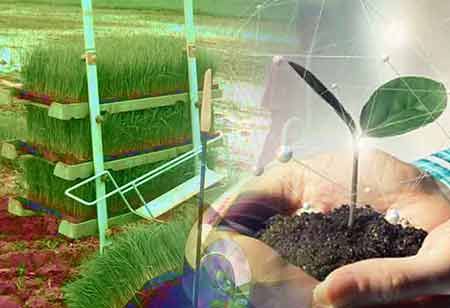Thank you for Subscribing to Agri Business Review Weekly Brief
How the Internet of Things is Transforming Aquaculture and Fisheries
Regulators now have information from satellite imaging, combined with the drone, aboard, or underwater IoT devices,

By
Agri Business Review | Tuesday, March 01, 2022
Stay ahead of the industry with exclusive feature stories on the top companies, expert insights and the latest news delivered straight to your inbox. Subscribe today.
The data may be helpful in optimizing fleet maintenance by utilizing AI predictive maintenance and minimizing fuel usage, which will lower operating costs for the wild fishing business.
Fremont, CA: Fish farms on land, at sea, and in the wild all profit from IoT and AI technologies globally. These technologies serve to protect the availability of food globally by assuring sustainable and cost-effective farming methods. Here are ways the Internet of Things is altering aquaculture.
• Over Fishing
Regulators now have information from satellite imaging, combined with the drone, aboard, or underwater IoT devices, which is crucial for ensuring the sustainability of our wild fish and seafood supply. In order to enforce sustainable fishing methods, this data may be gathered and utilized to track catches and vessel whereabouts. Large fishing organizations may use the same data to help traceability and supply chain transparency. Ultimately encouraging the final customer to use greater caution when making selections about purchases
• Precision Fishing
Along with sensors that identify the fish and catch size and onboard cameras that aid with sorting the catch, IoT devices and AI are assisting in giving fisheries information to optimize where and when they fish. The data may optimize fleet maintenance utilizing AI predictive maintenance and minimize fuel usage, lowering operating costs for the wild fishing business.
• Health & Welfare
Protecting the health and welfare of fish farms is crucial since a decline in water quality or an outbreak of a disease (such as fish lice) can have devastating effects. Farmers may act before an epidemic starts and enhance fish welfare by early detection. Smart fish farms can create AI models for the early identification of less-than-ideal circumstances using data from IoT sensors on fish behavior, water quality, and physiology.
• Feeding Optimization
Optimizing feeding may result in considerable savings and benefits because feed makes up a significant amount of operational costs, and under- and overfeeding have detrimental effects on fish health, size, and water quality. The usage of feeders that rely on vibration and auditory signals, like efishery, is common in smart fish farms and aids in more precise feeding. Using technology in aquaculture management is also increasing productivity and decreasing the need for labor, which has significant financial and safety benefits for distant marine farms.
• Harvest Optimization
Live data paired with data used to simulate a species' development, maturity, and reproduction can assist farmers in planning for the best time to harvest their crops and optimize rearing. To obtain a higher return, sophisticated models may be developed to help schedule the harvest based on the fish's size, expected mortality, and the current market price.





